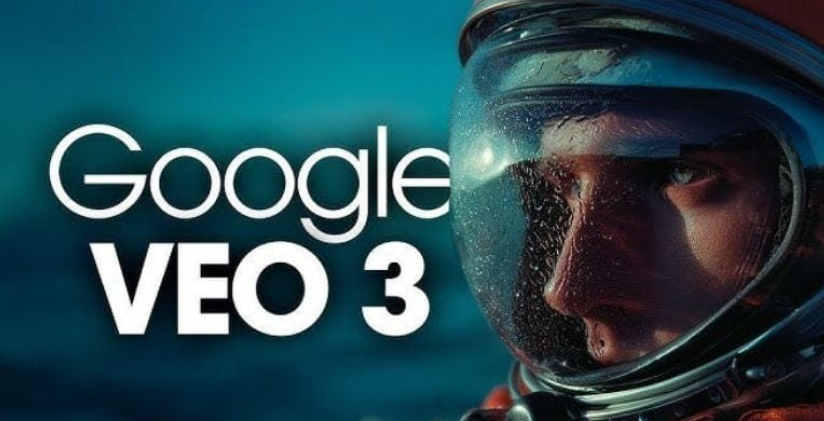
Are you ready to unlock a new era of visual storytelling? In 2025, the landscape of video creation is set for a seismic shift with the arrival of Google Veo 3. This groundbreaking AI technology promises to redefine what's possible in video generation with Google Veo 3. Imagine transforming your wildest ideas into stunning, cinematic-quality videos using nothing more than your words.
This comprehensive guide is your key to mastering this revolutionary AI. We'll equip you with essential knowledge and cutting-edge strategies to harness Veo 3's full potential, enabling you to produce professional-grade video content with unparalleled efficiency. Prepare to dive deep into Veo 3's capabilities, explore the nuanced art of prompt engineering with actionable examples, uncover advanced techniques, and learn how to strategically integrate this powerful tool into your marketing campaigns and creative endeavors throughout the coming year.
Understanding Google Veo 3: The Future of AI Video Generation
The digital content creation landscape is on the cusp of a revolution, and at its forefront is Google's groundbreaking AI model, Veo 3. This advanced system promises to redefine video production, moving beyond simple text-to-video to offer a truly sophisticated and creative tool for a wide range of users. Video generation with Google Veo 3 is poised to become an indispensable asset for creators looking to push the boundaries of visual storytelling.
What is Google's AI Model, Veo 3?
Google Veo 3 is Google's cutting-edge AI model meticulously designed for realistic and creative video generation from text prompts. It represents a significant leap forward, moving beyond the rudimentary outputs of earlier AI video tools. Veo 3 is built to understand and interpret complex instructions, translating them into visually compelling and coherent video sequences. Its development signifies a commitment to democratizing high-quality video production, making sophisticated tools accessible to a broader audience.
Key Capabilities: Beyond Basic Text-to-Video
Veo 3 distinguishes itself through its advanced capabilities that far surpass basic text-to-video functionalities. Users can expect features like:
- Cinematic Understanding: The AI grasps directorial cues and stylistic nuances.
- Physics Simulation: Integrated for more realistic movement and interaction within generated scenes.
- Multi-Modal Inputs: Supports text, images, audio, and more for richer prompts.
- Native Synchronized Audio: Ensures sound design perfectly complements visuals.
Here's a glimpse at how Veo 3 stacks up against more basic AI video generators:
Feature/ItemBasic Text-to-Video AIGoogle Veo 3
Cinematic UnderstandingLimited/NoneAdvanced, understands directorial cues
Physics SimulationMinimal/UnrealisticIntegrated for realistic movement
Multi-Modal InputsText-onlyText, images, audio, and more
Synchronized AudioOften separate/basicNative, high-quality synchronized audio
Output RealismCan be uncanny/stiffHighly realistic and fluid
Creative ControlBasicEnhanced through nuanced prompting & features
Why Veo 3 is a Game-Changer for Creators in 2025
The implications of video generation with Google Veo 3 for creators in 2025 are profound. It democratizes video creation, making professional-quality output accessible for marketing, storytelling, and artistic expression without the need for extensive technical skills or large budgets. Imagine small businesses creating polished promotional videos or independent filmmakers bringing their visions to life with unprecedented ease. Veo 3 empowers individuals and teams to produce engaging content, fostering innovation and creativity across industries.
Mastering Prompt Engineering for Veo 3 in 2025
The advent of advanced AI video generation tools like Google Veo 3 is revolutionizing content creation. To harness its full potential, mastering prompt engineering is paramount. This section will guide you through the essential frameworks and techniques for crafting compelling video narratives with Veo 3, ensuring your output is not just generated, but truly impactful. We will explore how to translate your vision into precise instructions for video generation with Google Veo 3, moving beyond basic requests to sophisticated, cinematic productions.
The Essential Framework for Effective Veo 3 Prompts
Achieving consistent and high-quality results with Veo 3 hinges on a structured and detailed approach to prompt engineering. A robust framework ensures that all critical elements of your desired video are communicated clearly to the AI. We recommend a framework that includes: Scene, Subject, Action, Style, Camera, Lighting, and Audio.
- Scene: Define the environment and setting.
- Subject: Clearly identify the main focus of the video.
- Action: Describe what the subject is doing.
- Style: Specify the overall aesthetic and mood.
- Camera: Detail camera movements and perspectives.
- Lighting: Indicate the type and mood of illumination.
- Audio: Describe sound effects and music.
By meticulously detailing each of these components, you significantly increase the likelihood of Veo 3 generating precisely what you envision. For instance, instead of “a dog running,” a more effective prompt would be: “Scene: A sun-drenched park. Subject: A golden retriever. Action: Joyfully chasing a bright red frisbee. Style: Whimsical and energetic. Camera: A low-angle tracking shot following the dog. Lighting: Golden hour sunlight. Audio: Upbeat, playful music with the sound of panting and a distant bark.”
Crafting Nuanced Prompts for Cinematic Results
Beyond the basic framework, advanced prompt engineering involves adding layers of detail that influence the artistic and emotional output of Veo 3. This includes specifying:
- Emotional Tone: Use descriptive words like “melancholy,” “triumphant,” “anxious,” or “serene.”
- Artistic Influences: Reference specific art movements, directors, or visual styles (e.g., “in the style of Wes Anderson,” “inspired by Impressionist painting”).
- Specific Visual Elements: Detail textures, colors, atmospheric conditions, and subtle movements.
- Temporal Cues: Specify time of day, season, or even historical periods.
Example of a Nuanced Prompt:
“Scene: A rain-slicked, neon-lit Tokyo street at midnight. Subject: A lone detective in a trench coat. Action: Silently observing a shadowy alleyway, a cigarette burning in his hand. Style: Gritty film noir, high contrast, desaturated colors with pops of neon. Camera: A slow, deliberate crane shot revealing the detective from above, then settling into a medium shot. Lighting: Harsh neon signs reflecting on wet pavement, deep shadows. Audio: A haunting jazz saxophone melody, distant city hum, the soft hiss of rain.”
Iterative Prompting and Refinement
It's rare to achieve perfect results on the first try. Effective video generation with Google Veo 3 often involves an iterative process. Start with a core prompt, review the generated output, and then refine your prompt based on what worked and what didn't.
- Identify what's missing: Did the AI miss a crucial element?
- Clarify ambiguity: Was a term too vague?
- Adjust stylistic elements: Is the mood not quite right?
By systematically refining your prompts, you'll train yourself to communicate more effectively with Veo 3 and achieve increasingly sophisticated results.
Advanced Techniques and Applications of Veo 3
As you become more comfortable with prompt engineering, you'll want to explore the advanced capabilities of Google Veo 3. This section delves into sophisticated techniques and diverse applications that can elevate your video content to professional levels. Understanding these advanced features will unlock new creative possibilities for video generation with Google Veo 3 in 2025 and beyond.
Leveraging Multi-Modal Inputs for Richer Narratives
Veo 3's ability to process not just text but also images, audio, and potentially other data types opens up a world of creative opportunities.
- Image-to-Video: Provide a reference image to guide the visual style, composition, or even specific elements within your generated video. For example, you could upload a mood board or a concept sketch.
- Audio-Driven Generation: Use existing audio clips or music to influence the pacing, mood, or even the visual events within your video. Imagine generating visuals that perfectly sync with a piece of music.
- Combining Inputs: The true power lies in combining these. A text prompt combined with a specific image and a music track can lead to highly customized and unique video outputs.
Integrating Veo 3 into Your Workflow
Veo 3 is not just a standalone tool; it's a powerful addition to your existing creative workflow.
- Storyboarding and Pre-visualization: Quickly generate rough cuts or specific scenes to visualize storyboards, test different camera angles, or explore narrative variations before committing to expensive live-action shoots.
- Marketing and Advertising: Create dynamic promotional videos, social media content, or explainer videos with speed and efficiency. Tailor content for different platforms and audiences by generating multiple variations.
- Educational Content: Develop engaging explainer videos, historical reenactments, or scientific visualizations that are difficult or costly to produce otherwise.
- Artistic Expression: Explore abstract concepts, create surreal landscapes, or bring fantastical characters to life without the limitations of traditional animation or filmmaking.
Ethical Considerations and Responsible Use
As with any powerful AI technology, responsible use of video generation with Google Veo 3 is crucial. Be mindful of:
- Authenticity and Transparency: Clearly label AI-generated content where appropriate, especially if it could be mistaken for real footage.
- Bias Mitigation: Be aware that AI models can inherit biases from their training data. Review outputs critically and strive for diverse and inclusive representations.
- Copyright and Intellectual Property: Understand the terms of service and any implications regarding the ownership and use of generated content.
FAQ (Frequently Asked Questions)
Q1: What makes Google Veo 3 different from previous AI video generation tools?
A1: Google Veo 3 represents a significant advancement due to its enhanced cinematic understanding, integrated physics simulation for more realistic movement, support for multi-modal inputs (text, images, audio), and native synchronized audio capabilities. These features allow for more nuanced control, higher realism, and greater creative flexibility compared to earlier, more basic text-to-video models.
Q2: Can I use my own images or audio with Google Veo 3?
A2: Yes, Google Veo 3 is designed to support multi-modal inputs. This means you can often use your own images as visual references or existing audio clips to influence the generated video, leading to more personalized and contextually relevant outputs.
Q3: How long does it take to generate a video with Google Veo 3?
A3: The generation time for videos with Google Veo 3 can vary significantly depending on the complexity of the prompt, the desired length and resolution of the video, and the current processing load on Google's servers. While it's designed for efficiency, highly complex or lengthy videos will naturally take longer than simpler ones.
Q4: Is Google Veo 3 suitable for professional marketing campaigns?
A4: Absolutely. Veo 3's ability to produce high-quality, cinematic videos with sophisticated control makes it an excellent tool for professional marketing campaigns. It can help businesses create dynamic promotional content, social media ads, explainer videos, and more, often at a fraction of the cost and time of traditional production methods.
Conclusion
Google Veo 3 is poised to be a transformative force in video generation with Google Veo 3 throughout 2025 and beyond. Its advanced capabilities, from understanding cinematic nuances to supporting multi-modal inputs, empower creators of all levels to produce stunning visual content with unprecedented ease and efficiency. By mastering prompt engineering, leveraging advanced techniques, and understanding its diverse applications, you can unlock new dimensions of creativity and storytelling.
Ready to experience the future of video creation? Start exploring Google Veo 3 today and transform your ideas into captivating visual narratives. Visit the official Google AI resources to learn more and begin your journey into AI-powered video generation!







